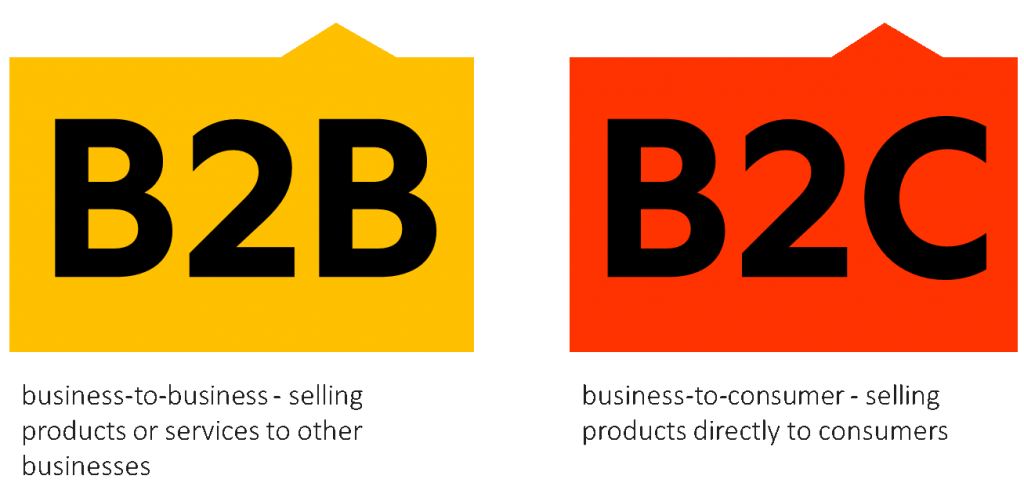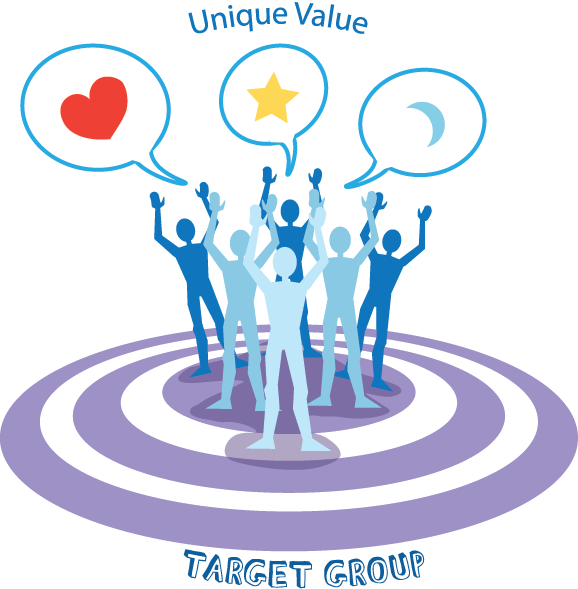
For NGOs it seems typical to have significantly different target audiences e.g. users and donors.
One are the end users of your services usually having a genuine need for your services/programs or interest in your cause. We could say they are engaged with your organization emotionally and have less technical knowledge or interest in how you operate. The other target audience are the donors who support NGO work from a more “objective” position, looking for ways to promote and develop certain values or outcomes that are affecting the big picture and landscape of the existing social system. They are familiar with NGO operating models and more technically/administratively skilled. We could say these 2 target audiences are drawn to your organization from different sides, first ones from the heart and second ones from the mind, and they are both important organs.😊

And a similar commercial concept that can be re-applied to NGOs is the business differentiation between B2B (business to business) and B2C (business to consumers) marketing.
In the NGO world we could say that B2B we would be very similar to donors and B2C to users of your programs and services.
And the marketing required for B2B and B2C is very different.
While B2B marketing is more focused on educating buyers and offering expertise, B2C is more focused on instant gratification and needs. Sounds pretty much like donors and users, right?
In marketing to other businesses (donors), your marketing efforts might be more focused on formal aspects of your programs and how this target group can achieve their strategic goals through your organization, whereas for users you might be focused more on the informal aspects, motivation, inspiration and emotional benefits of their engagement.
But although we need to be respectful of the obvious differences between these groups we also need to know that the outcome of our working and communicating efforts has to be the same – achieve buyer/user/donor delight.
Your job is a fine blend of being able to engage human beings and deliver a quality donor experience because ultimately:
It’s All About Human Engagement!
And these similarities between target groups are becoming even more obvious and important now thanks to digitalization.
LIMB – TARGET GROUPS – DEALING WITH MULTIPLE TGs
➤ Marketing to end users of your programs must deal with the new access to information.
You are now dealing with end users who are no longer necessarily making impulsive decisions based on little information. Instead, these are informed users with access to resources about the service or program they can get from you as well as other ways or organizations they can get it from.
➤ Donor marketing must appeal to donor’s emotional triggers.
The rise of globalization and connectivity has enabled donors to spread their portfolio and ‘switch’ between diverse organizations. To differentiate your organization you need to apply some rules from the “marketing to end users” approach – establish emotional connections with your donors and develop their loyalty.
And one of the biggest differences between donor and end user marketing are the consequences following the decision to get involved with your organization. In NGO terms this would be the consequences of approving a certain project for example (for donors).

Because for end user, this one user is the only one affected by a bad purchase, but in dealing with donors, the purchase affects their entire company/organization, thereby raising the stakes.
The challenge of the digital era now is that this new breed of donors (and end users) has a wealth of information at their disposal to make an informed decision, which in large part, is thanks to content marketing.
For end user marketing, this warrants a change in strategy to strive for establishing a more professional relationship driven marketing instead of one that is impulse driven – traditionally in business, a typical B2B marketing strategy. This would mean that you can no longer depend on inspirational videos or emotional photos you now need to clearly communicate to your user as the tangible benefit they are getting from you.
For both these users (end user and donor) therefore it is crucial to offer tailored information – in line with your goals and in line with their needs and expectations. And content marketing is something that can help with that
What makes content marketing different than any other form of marketing or advertising is its focus on valuable content that is created and distributed to attract a defined audience. This is information that users actively seek out and want to consume, in comparison to advertising they might purposely avoid.
But to proceed with content marketing you need to be an expert on your target groups so let’s talk about how you become one.
